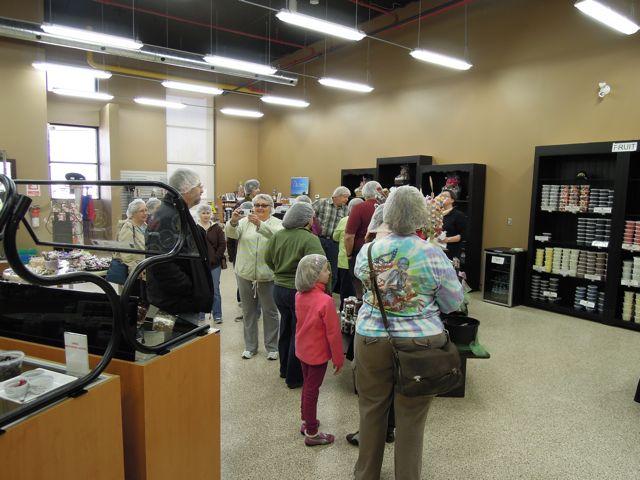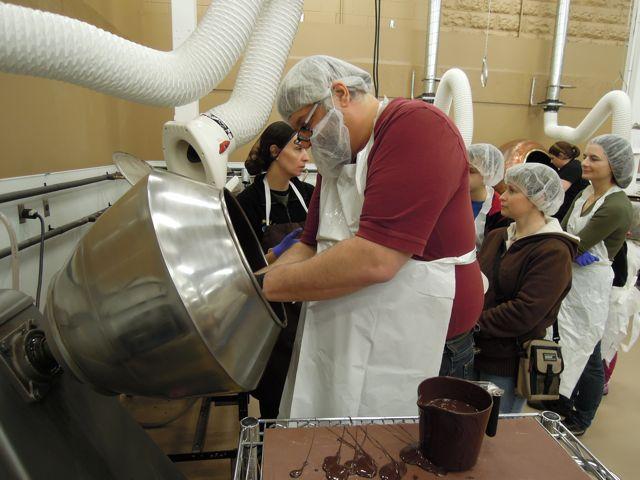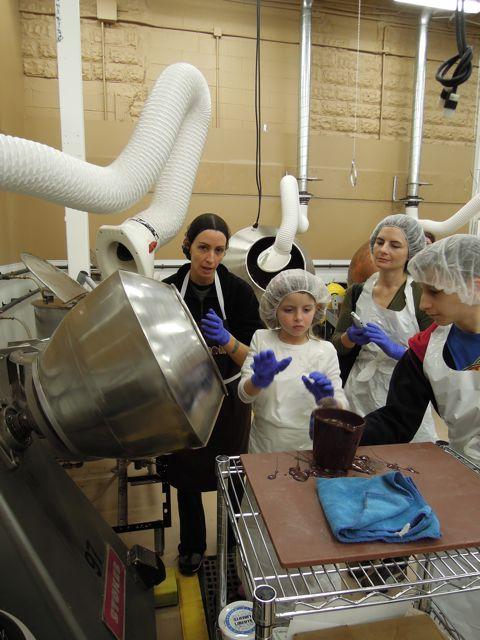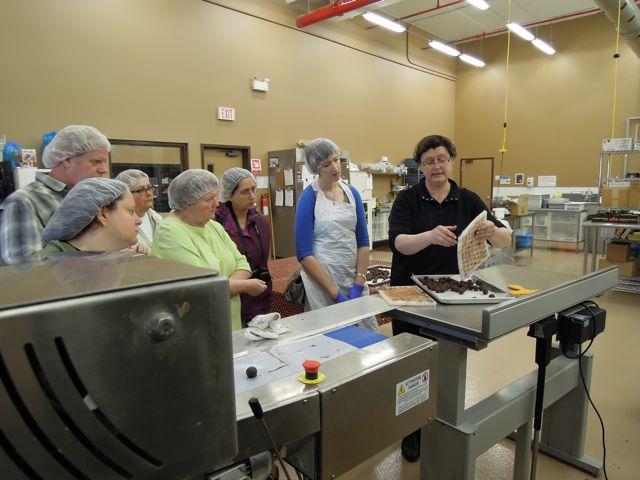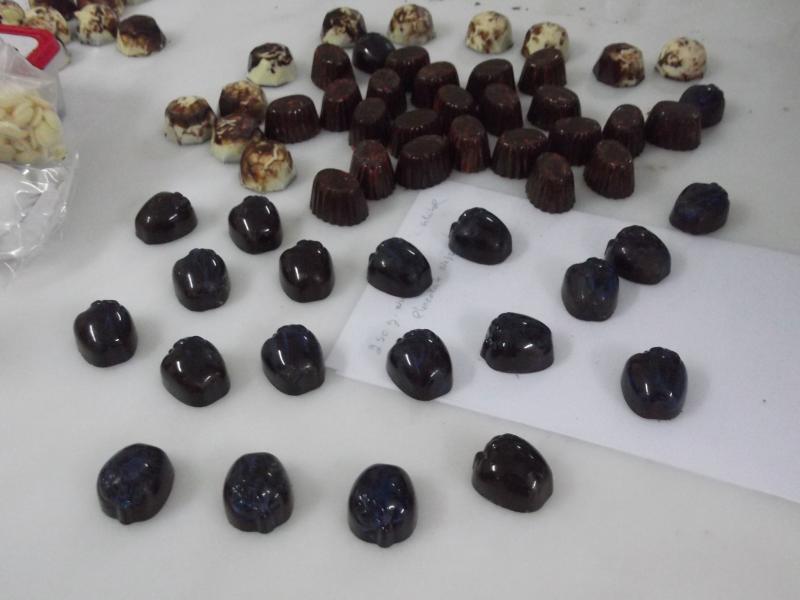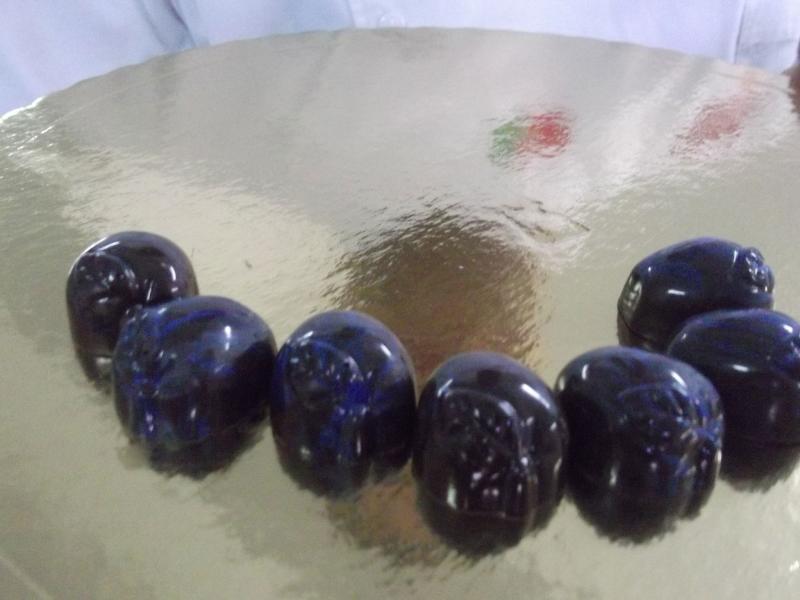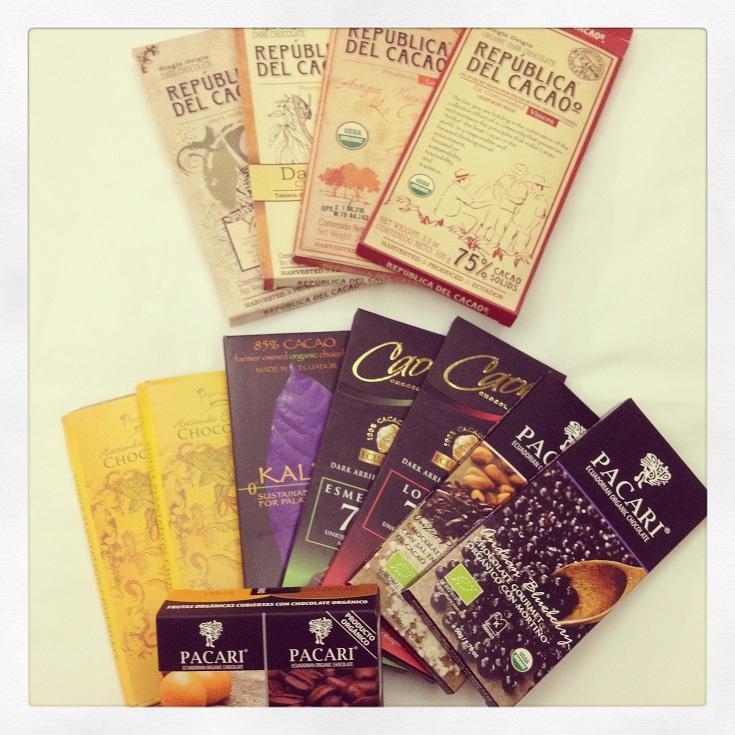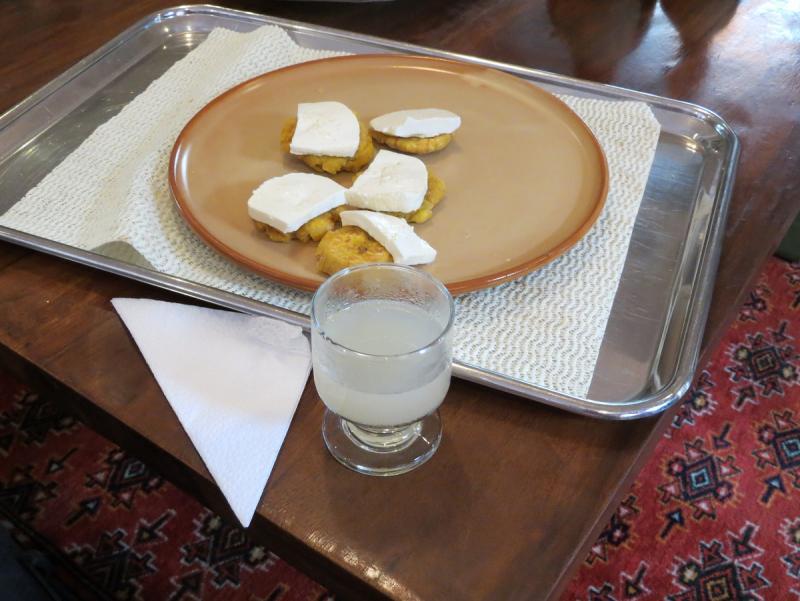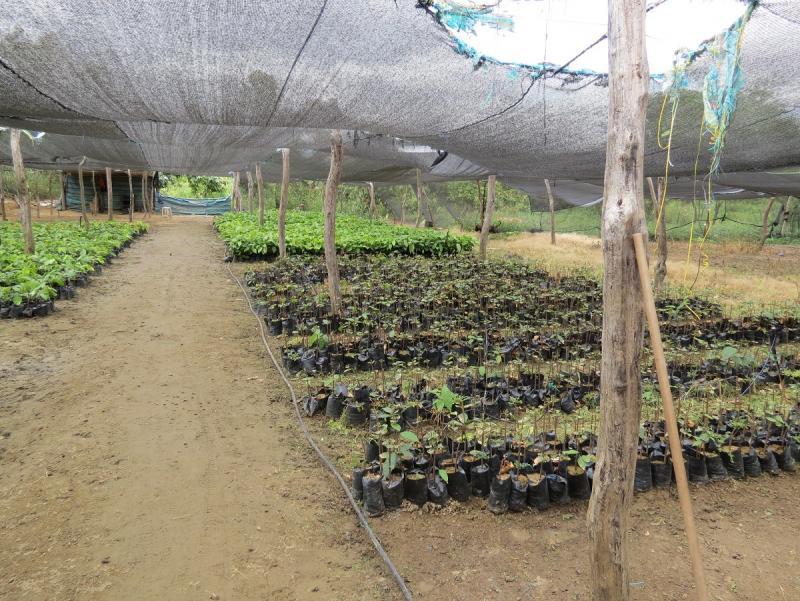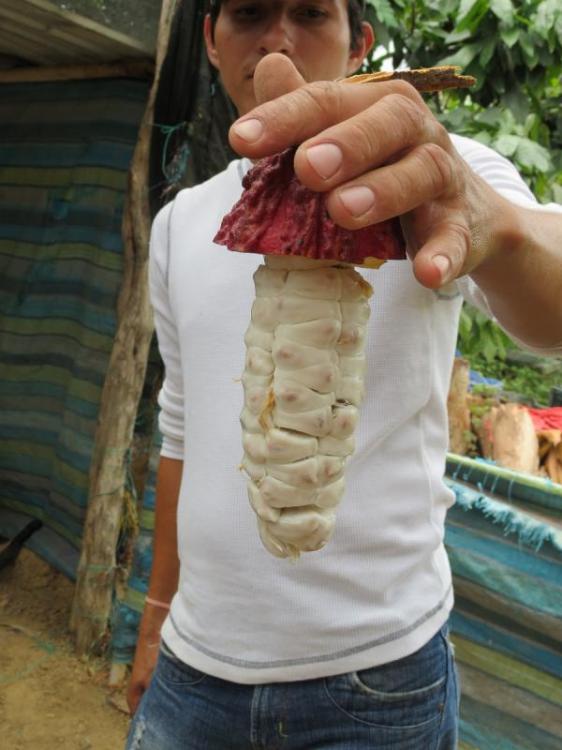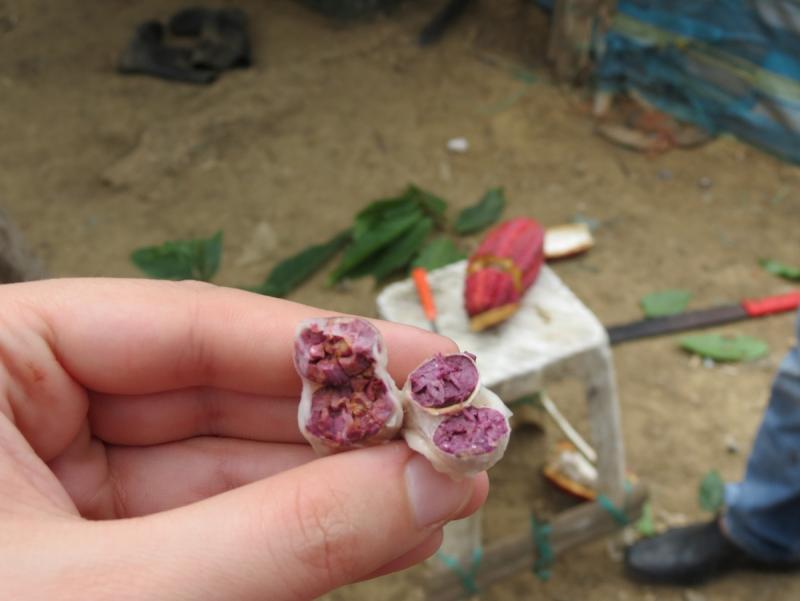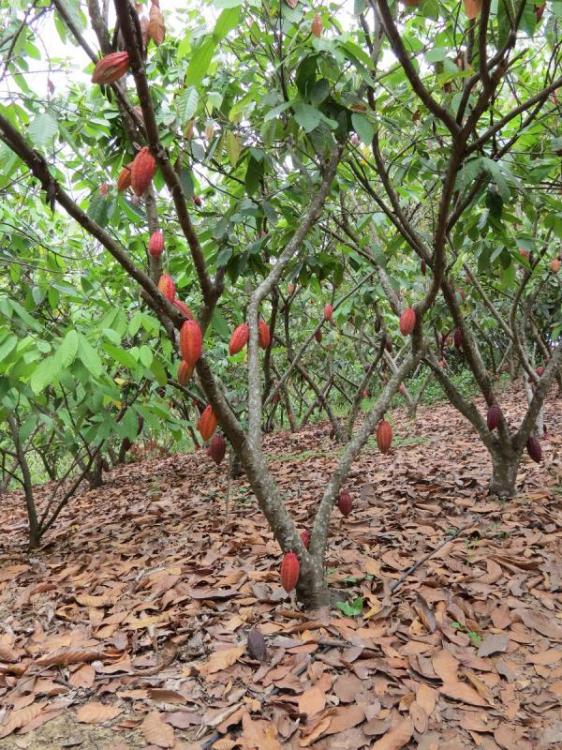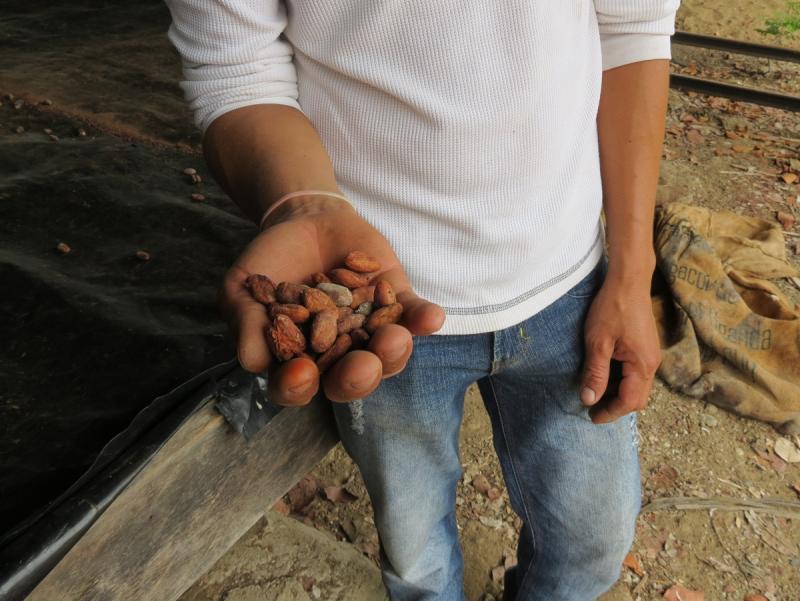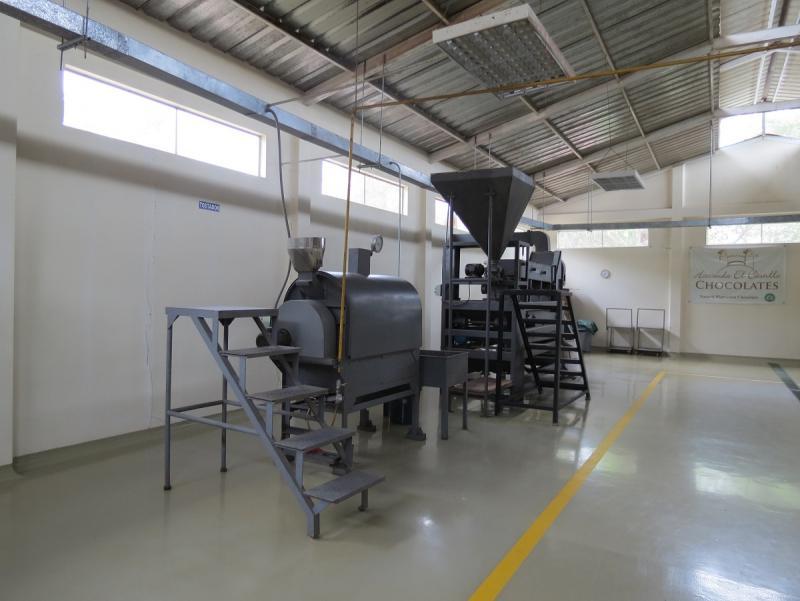Search the Community
Showing results for tags 'Chocolate'.
-
What to make when it's sweltering? Trying to think of heat-proof confections for the summer. Every week I make 7-800 little bite sized treats that we give with the bill at the restaurant. Truffles were great for the winter, but it's getting too warm in both the kitchen and the dining room to produce and hold truffles. Last summer I made pate de fruits, which hold up well, but which I'm pretty sure gave me a splatter burn every single time I made it. Too much pain. Ive been working on some gelatin gummies that I like and that don't hurt, but they seem to get droopy in the heat as well. I've been adding agar to help the texture, maybe more agar and/or cook the syrup to a hotter temperature? How do hard candies hold up? Nougat? Humidity can be an issue but I'm more concerned about heat. Cookies are an option, especially easy to pipe or slice and bake. Amaretti? Has anyone tried cutting shortbread with the guitar? Candied nuts seem a little too simple - what else besides chocolate would make them special? What are your favorite treats that stand up to heat?
- 24 replies
-
- Confections
- Chocolate
-
(and 1 more)
Tagged with:
-
My wife will be in Geneva for a couple of days and is tempting this chocoholic with a box from Geneva's finest. Where should she go? Cheers! Dan
-
I find myself heading to Zurich next week on business and will have about 72 hours in the city. So between client meetings, dinner, etc, I will be on a mission to find excellent chocolate products. Does anyone have any recommendations? There are a few threads going back to about 2006, but nothing recently. Have you been to Zurich? What made you swoon?
-
I find that making chocolate molten cakes in a regular oven doesn't produce consistent results. I am wondering if there are modernist improvements in this space. I would imagine that cooking them in a combi oven would produce more consistent results, but I don't own a combi oven. Is there any other trick or technique that increases consistency of results when making this dessert?
-
Hello everyone, long time no see :-) I hope everything is wonderful!! I will be attending a chocolate class in Chicago at the Callebaut academy, August 5-6-7 and I was wondering if anyone is going, it would be lovely to meet someone from the forum after so many years. I am quite excited about this class as it will be my first professional class after many many many years (I was still in my twenties and in Italy :-P) Glad to be back Warmes
-
Today we started out with a trip to the college to start getting ourselves set up for tomorrow. Then at 10 am we met at ChocolateFX and started our tour. Of course hair nets are obligatory if you are going to go into a food manufacturing facility! Wilma and Art had the small pan set up so that we could pan some raisins. Here's Pat (psantucc), with beard appropriately netted, applying some chocolate to the raisins. Ava (FrogPrincesse's little one) preparing to add more chocolate, Kyle helping and FrogPrincesse awaiting her turn. The fancy packing machine. Listening with rapt attention to Wilma explaining the making of ganache truffles in the round silicone molds.
- 73 replies
-
I am looking at the various Valrhona milk chocolates and trying to find a comparison of them. I am searching for a milk that is not so sweet as most of them are. If there are opinions on the following chocolates, I would be interested in hearing them: Valrhona Tanariva Lactee Milk Chocolate Milk chocolate, 33% Cocoa, 38% Sugar, Fat Contents 35.5%, Milk 28%. Valrhona Caramelia Milk Chocolate Milk chocolate, 34% Cocoa, 29.5% Sugar, 22% Caramel. Valrhona Equatoriale Lactee Milk Chocolate Milk chocolate, 35% Cocoa, 44% Sugar, Fat Contents 37%, Milk 20%. Valrhona Orizaba Lactee Milk Chocolate Milk chocolate, 39% Cocoa, 34% Sugar, Fat Contents 41%, Milk 26%. Valrhona Andoa Lactee Milk 39% Cocoa - Fair Trade Milk chocolate, 39% Cocoa, 34% Sugar, 26% Milk Content. 41% Fat Content. Valrhona Jivara Lactee Milk Chocolate Milk chocolate, 40% Cocoa, 34% Sugar, Fat Contents 40.5%, Milk 23.5%.
-
Some time ago, in a thread on fillings for chocolates, DianaM recommended Valrhona's new white chocolate, named Opalys, to me. It is supposed to be better for "fading into the background" in fillings where one wants other flavors to predominate and also better for enrobing. I tried to find it in the U.S. but had no luck. I thought that I would report that it is now available (I found it on Chocosphere, which also has the fairly new Dulcey, which I believe Chocolot from this forum has used and which sounds interesting). I have not tried either of these yet. The price of Opalys is above that of Ivoire, but not by a lot.
-
Hello I want to share my first adventure at home. No more than 25 hours of classes in chocolate, but everything will be achieved. Hope you enjoy and help to evolve. Thanks
-
Hi everyone, Melbourne (AUS) is having a bit of a warm spell at the moment that's looking to continue - 30+ celcius for about 2 weeks straight. I want to play around with a bit of chocolate making but it seems... foolish! In the mornings, the ambient temperature in my house is maybe 23, and i'm wondering if this would be ok for dipping (perhaps a quick trip to the fridge to help them set up for a few minutes?). With moulded pralines, it seems the brief fridge steps that some people recommend make sense since the whole tray is done at once, but it seems impractical for hand dipping, since i'd have to either wait till a whole tray was done (and perhaps moot the point) or otherwise do tiny batches! I guess a related question is that if i made a ganache to slab, would it even set up properly overnight? I was thinking that the crystals would still form as it cooled, but I don't know. Any tips for working in warmer weather (where climate control isn't possible)? Am I best to just write it off over summer and pick it back up when things cool down a bit? The one positive I can think of is that it'll take longer for my tempered chocolate to cool down, so less reheating! Cheers, Stuart.
- 22 replies
-
- Confections
- Dessert
-
(and 1 more)
Tagged with:
-
Have to say that most of the chocolate which I 'melt' I do over water using a stainless bowl whose flanges far outreach the edge of the pot. So far, so good. The other melting is putting the chocolate into the heated cream for ganache. Tempering in my Revolation except when away from home and then I use a Pyrex measuring cup in the microwave, once I have figured out the particular microwave I am using. Not exciting, but it's what I do.
-
I have seen Nakazawa (available in the U.S. from Unger Co. in Cleveland) mentioned as a good source for boxes for chocolates, and they certainly have some very nice looking ones. Unfortunately 200 appears to be the smallest lot in which these are sold, and I am looking for smaller amounts of various sizes. Can anyone suggest other sources?
-
I am a novice when it comes to molding chocolate. I posted this question on Cake Central and no one could help me with an answer. It was suggested I try this site. I'm sure this is a dumb question, but I have to ask. Is there any way to re-shine chocolate that has dulled after being removed from a mold? I recently made some chocolates that needed a little bit of cleaning up around the edges. I was holding the chocolate, wearing cotton gloves, and when I was done the chocolate had a matte finish like I had touched them with my bare hands. Is there any way to re-shine them or is it a lost cause and I should start over? Thanks!!
-
Visit to Cocoa Plantation in Ecuador On my recent trip to Galapagos Islands in Ecuador, we stayed for a day in Guayaquil, in order to tour a cocoa plantation and small factory- "Hacienda El Castillo". They manufactur the chocolate- from the cocoa trees to bar, solely in this plantation. We started in the main house, where we drank some cocoa juice, made from the pulp surrounding the cocoa beans- very sweet, but delicious: We saw cocoa trees in various stages of growth. In Ecuador, the cocoa variety that is grown is called "Arriba"/"Nacional". Since this pure variety doesn't produce many pods, they use a clone "CCN51"- a hybrid of trinitario and Nacional Inside of a cocoa pod: Fresh beans from 2 pods- 1 pure nacional (the darker), and one CCN51 cocoa tree Sun Dried and fermented beans: They mostly dry their beans in the sun, but if it is rainy, they have a gas heater to dry them. They claim there is no impact on the final flavor of the chocolate (I don't know how true that is), but there was a very heavy gas smell The small factory and their website: http://www.haciendaelcastillo.ec/home.php They produce 50%, 70% and 100% chocolate in the factory. After tasting the finished chocolates, we were a bit disappointed- the 50% was very very sweet, the 70% was just an average chocolate, not very special, and in my opinion not very good (The 2 left bars in the picture below). I bought a bar to bring to the conference in April, to hear some other people's opinion. Eventually, we went to a supermarket and bought some chocolates, that are produced in Ecuador, from cocoa grown in Ecuador: What really stood out (in price as well- ~$8-9 per bar), was the Republica del cacoa chocolate. They use only the pure nacional type, and not the clone. They had bars from severel areas in Ecuador which were incredible, and my favorite was a dark-milk chocolate- 65% milk chocolate- where you could taste the high quality dark chocolate, with some milk creaminess.
-
In his introduction to butter ganache in Chocolates and Confections (1st ed.), Peter Greweling says clearly that there must be 2.5 times as much white or milk chocolate as liquefiers in the formula. Yet in all his recipes that use white or milk chocolate, the amount of chocolate is nowhere near 2.5 times the amount of liquefiers (flavorings + butter). In the strawberry balsamic, e.g., the liquefiers add up to 340 g, so the amount of chocolate should be 850 g, yet he calls for 360 g of chocolate. And these recipes I am speaking of are for slabbed ganache, not piped. so they are not meant to be especially soft. I had a problem when I tried to make one of the ganaches (it never really hardened), and given his 2.5 rule, I am no longer surprised. Am I missing something, or is there some problem with the recipes? Any insights would be appreciated.
-
Just joined the community and have to say that it has been wonderful reading so many interesting and educational topics specificallly for sugar confections and chocolate, and during the past few days have read more than 8 hours a day (almost like a full time job) and haven't been able to finish, hopefully will accomplish this task someday. However have not found an answer to a project that I'm venturing into. Have a customer that wants filled molded chocolate with red wine, white wine and champagne. The problem part and cannot figure out is how to close the mold once I fill it with the wine, since the chocolate will be denser and tend to displace the liquid(wine) from the cavity. Was planning to use a hydrocolloid to thicken the wine and have a higher density (making the wine into kind of a jelly or perhaps some caviar spheres, like the molecular gastronomy) since I dont want to add nothing to the wine itself and leave it the most natural as possible, the wines are of different varities such as merlot, cabernet, etc. Any suggestions will be greatly appreciated Thanks
-
I have been reading postings on fruit compounds and powders for use in getting more intense flavors in ganaches (to be used for chocolates, specifically in cream centers) and have a few questions: FRUIT COMPOUNDS A number of posters do not like compounds, saying they contain artificial flavorings. I looked at the Amoretti site, and their ingredients (insofar as I could find them) seem to be natural. All opinions of Amoretti products on eGullet appeared to be very positive. I also saw good things about MEC3 products, which appear in Gustosia compounds, available at Qzina for fairly moderate prices--as these things go--but I couldn't find any ingredient lists. Albert Uster sells compounds (a kilo of raspberry is $77), but ingredient information is not provided. Pastry Chef Central carries Dreidoppel (which has received one less-than-stellar review on this site). Most posts on these subjects, however, are rather old. So my questions on compounds are: 1. Are Amoretti and Gustosia products still rated high by eG members? The Albert Uster compounds? Any others you would recommend--or not recommend? 2. I could not tell from the Amoretti site whether they sell directly to (small) consumers. Does anybody know that? And, assuming they do: Since there are no prices on their site, approximately how much does a 1-kilo container of fruit compound cost? FRUIT POWDERS Some chocolatiers like fruit powders (freeze-dried) to flavor fillings (for one thing, they do not add any liquid), and here there appear to be many sources. Van Drunen Farms looks promising for these products, but they state online that they do not sell directly to individual consumers. L'Epicerie and Chef Rubber carry fruit powders as well. So my questions on powders: 3. Do these powders have an authentic fruit flavor? 4. What sources for them do you recommend? Many thanks for any help in my continuing quest ("obsession" is such an ugly word) to obtain a real punch of fruit taste in cream fillings for chocolates. I am seeking to avoid use of much fondant as I think it gives a "flat" taste to things, much like making buttercream frosting with confectioner's sugar, and it dulls the taste of fruit.
-
So, half a decade or so after everyone got sick of spherification I decided to start doing it. I needed to bring something to an erotic dessert party, and thought chocolate truffles that explode in the mouth would be the ticket. It worked pretty well. People loved them, and made incredible faces, wondering about what was going on in there. One friend said they were like "yolks of the ganache vulture" ... a name that has stuck. Unfortunately, making them was a gross process. My assumption that a mellon baller would work for scooping the cold ganache into the alginate was thwarted by their crumbly texture. I ended up forming the balls by hand, which left me looking like I was covered in poop. Here's the recipe (it's for reverse spherification): 175g heavy cream 30g liqueur 15g sugar 3.2g calcium chloride 100g dark chocolate, chopped The chocolate is chilled in the freezer before making balls, and then soaked in hot water to melt the centers before serving. Two thoughts I had are substituting invert syrup for the sugar, and adding gelatin (enough to give them better adhesion while cold, but not so much as to thicken them noticeably while melted). Any better ideas?
-
Ewald Notter calls for using tempered chocolate in his butter ganache recipes. Peter Greweling calls for using it not only in butter ganache but also in all slabbed ganache. Today I made Greweling's "Raspberry Bites" (a butter ganache recipe). I dutifully tempered milk and dark chocolate to make the ganache. But when I added the chocolates to the butter (all more or less at the prescribed temperatures), the mixture developed small lumps. I went ahead and added the raspberry brandy, and it got worse. Thankfully I had my immersion blender and beat the mixture over warm water until the lumps melted. There appeared to be no harm done from heat or blender; I had no other idea of what to do. I am wondering if the tempered chocolate is really necessary. I understand from Greweling's book that the difference is one of improved texture, but I could put up with a less-than-perfect texture rather than lumps in the ganache. Any ideas would be appreciated.
-
I just completed my first effort (aside from truffles) at dipping ganache in chocolate (Andrew Shotts's Coffee-Hazelnut). Fairly successful, tastes great, but the hazelnut praline paste (homemade, as he suggests, but you can't really get it smooth at home) made cutting neat squares difficult, so some of the finished product is a little rough (can we say "homemade-looking"?). Another issue in cutting was that for the bottom I used untempered (as many people recommend) milk chocolate (I heated it to around 104 F. and then used it), but it still became quite firm and did not cut cleanly. But my question is what to do with the chocolate used for dipping? Ordinarily I let such chocolate harden and reuse it another time, but there are decidedly bits of praline in this. I wouldn't bother asking, but I had to use a sizable amount of chocolate to get the pool deep enough for dipping, so what would you do with the leftover? Just turn it into filling for another batch of chocolates? I'm assuming it should not be used for future dipping, except perhaps for the same recipe. Thanks for any advice.
-
I have been using some recipes in Ewald Notter's book and have come across a puzzle. In two recipes (key lime pralines, page 178, and mint pralines, page 186) he uses what he calls a "cracker," more like a cookie, made of chocolate and feuilletine, which eventually becomes the base of the praline. This part of both recipes calls for chocolate, cocoa butter, feuilletine (or corn flakes as a substitute), and butter. But he never mentions adding the butter. Instead he calls for adding the cocoa butter twice. I would assume the second mention is meant to be the butter, but at that point in the recipe he specifically says "Add the liquid cocoa butter..." after he has called for adding it previously. Has anyone tried either of these recipes or have a suggestion as to what was intended? Any help would be appreciated.
-
I am fairly new to chocolate work and have been spending a lot of time looking at possible fillings. I have Greweling's Chocolates and Confections, Shotts's Making Artisan Chocolates, and Notter's The Art of the Chocolatier, have made a list of all the fillings that seem interesting, and have now experimented with some of them. Obviously ganache is the standard type of filling, and some of the options have been delicious (Greweling's pumpkin caramel is the winner so far). But I am feeling some limitations of the medium--the chocolate, especially if it is milk or dark, tends to overwhelm the flavoring. Notter's "Tropical" praline, for example, has banana, passion fruit, mango, lime and lemon juice, but the combination of milk and dark chocolate (in my opinion) nearly overwhelms all those tropical flavors. Tasters didn't know there was banana until I told them. I found a banana/caramel recipe from the Callebaut site (from a link from this forum) that uses white chocolate, and that works better to let the flavors through (I added a few drops of lemon juice to counteract some of the sweetness). So, as far as I can tell, there are two "vehicles" for praline flavor--ganache and fondant--and the authors I have consulted so far don't give a lot of space to fondant. I made it once years ago, and my memory is that it is very, very sweet. So does it make a good filling for chocolates? Can practically any flavor be added? My impression of regular (non-gourmet) chocolates that people buy in boxes (such as Godiva) is that they use a lot of fondant; they are often a color other than chocolate and I can't think of any other way that type of filling is made. I'm not entirely sure what my question is, except to ask whether I am correct in assuming that the choices for fillings are ganache and fondant (maybe caramel is a third?). Do many people on this forum use fondant for this purpose?
-
I want to ask the chocolatiers here on the board if you have ever considered using another method to keeping chocolate warm and able to work with? I only ask because I was up early this morning making truffles and I had the tv on for some background noise. A commercial for this contraption called a nuwave oven came on and one of the examples they used was on chocolate. He kept the chocolate on 100 degrees and it stayed on exactly 100 degrees the entire time. I paid almost a grand for my used tempering machine and its alot of work. Anyway, I know that ads arent always truthful but this product claims to keep whatever you cook at a precise temp. and I was just thinking that it might not temper your chocolate from the beginning but that it would really help it maintaining the temper while you are working. Anyone else see the infomercial or think this product would help? I find that when im working....the phone will ring or a customer will walk in or something will delay my work and its a hassle when I have to stop what Im doing because the chocolate is now out of temper. By the way, its called the nu wave oven pic
-
Coconut is one of my favorite flavors with dark chocolate. I've been working on a coconut truffle filling for molded pieces that is coming along, but I'd also like to create a more shelf-stable filling for a chocolate bar, like a coconut gianduja or a coconut version of a peanut butter cup. I've been making Greweling's PB cup recipe, and I'm thinking something like toasted shredded coconut and possibly powdered coconut milk with coconut oil in place of the PB, plus the cocoa butter to firm it up. Anyone tried anything like this? I would do the bars in 60% or 70%, should I be concerned about fat migration with the coconut oil and dark chocolate? I would want these to have a shelf life of 2-3 months. Thanks for any ideas! Andrea
-
I was checking out Amazon and I discovered Peter Greweling has a new book coming out. Well, not really a totally new book but a new edition of Chocolates & Confections. http://www.amazon.co...r/dp/0470424419 I have his first two books and I have used them with great success. The first book was a great reference book for my Food Chemistry course last year, actually it was a whole lot more informative than the text I had to buy for the course. I am having a hard time deciding if I want to put the money down and pre-order this book too. Decisions Decisions. I think I am leaning towards getting it anyway. His books have been great so far. Anyone got an opinion on picking this book up if you have the other two?
- 7 replies
-
- Confections
- Cookbook
-
(and 1 more)
Tagged with:





